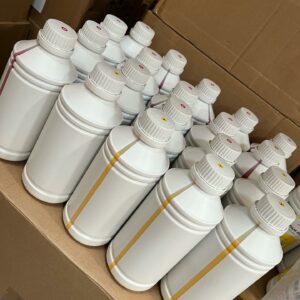When it comes to apparel printing, durability is a crucial factor to consider. Whether you’re creating custom t-shirts, hats, or other products, you want your designs to last as long as possible. One popular method of apparel printing is DTF transfers. But how long do DTF transfers last? In this blog post, we’ll explore the durability of DTF transfers, and provide tips for maximizing the lifespan of your designs. By the end of this post, you’ll have a better understanding of the factors that affect durability & testing methods. We will also discuss how to choose quality products that will stand the test of time.

Are DTF transfers durable?
When made with high-quality materials and applied properly, DTF transfers are durable. Their endurance depends on transfer paper or film, ink, cloth, and washing and drying techniques.
DTF may stay long and resist fading, cracking, and peeling when made with high-quality materials and applied properly to a matching cloth. Moreover, they provides superb color vibrancy, resolution, and detail.
Factors That Affect Durability
1. Fabric Type

Fabric choice affects design durability. With time, certain textiles are more likely to fade, peel, or split. Natural textiles made of cotton or silk often last longer than synthetic ones made of polyester or nylon.
This is because natural fibres are less prone to degrade over time and may absorb ink or transfer more efficiently. Consider the garment’s purpose and design while choosing a fabric. Choose a sturdy, high-quality fabric for a design that will be worn and cleaned regularly.
2. Washing and Drying Methods
Washing and drying your clothes might also impair their longevity. Designs may fade, fracture, or peel as a result of abrasive washing techniques, excessive heat, and harsh detergents.
It’s crucial to strictly adhere to care guidelines to improve durability. Avoid bleach and fabric softeners and instead use a mild detergent. To prevent overheating while drying, use a low heat setting or let the clothes air dry. Turn clothes inside out before washing or drying to preserve the pattern.
3. Quality of the Ink or Transfer
The durability of your design depends on the ink or transfer you choose. Quality inks or transfers have a higher chance of withstanding fading, cracking, or peeling over time.
Avoid cheap, low-quality transfers or inks and instead go for items that are expressly made to be durable. Make sure you’re using the right fabric-specific ink or transfer. Using the improper inks or transfers on particular materials will reduce adherence and durability.
How Long Do DTF Transfers Last?
Overview of DTF Transfer Durability
In recent years, DTF (Direct-to-Film) transfers, a relatively new printing technique, have become more well-known. They are digitally produced on an unique film and heat-pressed into the garment, unlike vinyl transfers.
High-quality, bright prints on DTF transfers are well-known, but how long do they last? DTF transfer durability depends on fabric type, washing, drying, and transfer quality. DTF transfers may last up to 50 washes, according to some manufacturers.
Testing Methods for Durability

Testing the robustness of DTF transfers can be done in a number different ways. The “rub test,” which includes rubbing the transfer with a piece of cloth to imitate wear and tear, is one popular technique.
The “wash test” involves repeatedly washing and drying the clothing to test the transfer. Moreover, some manufacturers could put the transfer through accelerated ageing tests that imitate long-term exposure by subjecting it to extreme heat, humidity, and UV radiation.
Examples of Long-Lasting DTF Transfers
There are several instances of DTF transfers that have lasted. One example is the usage for personalised names and numbers on sports team shirts. The DTF transfers can resist the numerous washing and drying that these jerseys routinely undergo. Several custom t-shirt firms provide DTF transfers as a durable alternative to screen printing.
Tips for Maximizing Durability
Care Instructions for DTF Transfers
Maximizing the longevity of DTF transfers requires proper maintenance. These kinds of prints should be cleaned with a mild detergent in cold water, inside out. Avoid using fabric softeners or bleach since they might ruin the print.
Hang drying or low-heat drying may also protect the print. Moreover, stay away from ironing directly over the print since doing so can make it peel or break.
Choosing the Right Fabric for Your Project

Your choice of cloth affects how long your DTF transfers or will last. Certain textiles, like cotton or mixes of polyester, have a good tendency to last over time.
Some materials, such as silk or nylon, can need particular handling or might not even be appropriate for DTF printing. For the best results, be sure to do your research on the suggested textiles for the printing technique you’ intend to use.
Quality Control for Ink or Transfer
The final product’s longevity is impacted by the calibre of the ink or transfer used in DTF transfers. Use renowned inks or transfers. To ensure even ink or transfer application, do quality control checks during printing. This prevents cracking, peeling, and fading.
Following these durability suggestions may help your DTF transfers retain their brightness and brilliance over time.
How long does DTF printing last on shirts?
The quality of the DTF transfer, the fabric, and the shirt’s care and upkeep affect its longevity. Although some DTF transfers may only survive a few washes, others could, with appropriate care, endure for many years. These considerations make it impossible to predict how long DTF transfers on shirts will last.
So, What is the lifespan of DTF? They may last 2-3 years on shirts with appropriate maintenance, according to certain manufacturers and experts. If you need even more durable designs, embroidery is an alternative to DTF.
Is DTF ink permanent?

DTF ink is not entirely permanent, like other inks. Due to exposure to sunshine, washing, and other environmental variables, it may degrade or fade over time.
Nevertheless, the durability of DTF ink may differ according on the ink’s quality, the printing process, and how well-cared-for the printed item is. DTF ink is durable and fade-resistant with appropriate handling. DTF-printed products should be washed in cold water and avoided harsh chemicals like bleach and fabric softeners.
Does DTF last longer than vinyl?
When it comes to durability, DTF (Direct-to-Film) transfers and vinyl each have certain benefits and drawbacks.
Especially for outdoor usage, vinyl is often thought to be more durable than DTF transfers. Vinyl is durable and weatherproof, making it ideal for outdoor signs and vehicle graphics. Vinyl is a common material for sports gear and uniforms because of its reputation for resilience to abrasion and scratching.
DTF transfers provide more colour vibrancy, resolution, and detail than vinyl. Vinyl cannot print full-color artwork or photographic pictures, but DTF transfers can.
Both DTF transfers and vinyl may be tough and long-lasting for indoor usage on clothing with the right upkeep. Their longevity depends on material quality, application process, fabric type and quality, and washing and drying procedures.
Does DTF last as long as screen printing?
For bigger orders and outdoor usage, screen printing is often regarded as one of the most durable printing techniques. The basic characteristics of screen printing inks are thickness and high pigment content, which makes them resistant to fading, cracking, or peeling over time. Cotton, polyester, and nylon are all suitable for screen printing.
How durable is DTF printing when compared to screen printing? DTF transfers can print high-quality photos and full-color graphics because to their colour brightness, clarity, and detail. They may persist for years without fading, cracking, or peeling with appropriate care.
How long does digital printing last?
High-quality ink and materials make digital printing durable. Digital prints may persist for many years or even decades with the right upkeep and care. When stored out of direct sunshine and humidity, high-quality pigment-based inkjet prints may survive 100 years or more.
Nevertheless, UV radiation, heat, moisture, substrate, ink, and printer quality might affect digital print longevity. Dye-based ink prints may fade faster in direct sunshine or severe circumstances.
Conclusion- DTF Durability
The quality of the materials used, the kind of fabric, and the upkeep and maintenance of the printed item are just a few of the variables that might affect how long DTF (Direct-to-Film) transfers and DTF printing last. DTF printing is popular for printing high-quality photographic photos and full-color graphics because they are durable and resistant to fading, cracking, and peeling.
DTF printing have great colour vibrancy, resolution, and clarity, making them a viable choice for a broad variety of printing applications.
Using superior transfer materials and ink, adhering to correct application processes, and making use of suggested washing and drying techniques are all important for extending the life of DTF transfers. Avoid strong chemicals, abrasive surfaces, and direct sunshine to prevent DTF transfers and prints from cracking & fading.
FAQs
DTF transfers may last more than 2 years depending on the transfer material, ink, and printed item care.
Indeed, DTF printing has the potential to be long-lasting, particularly when superior transfer media and ink are utilised, as well as when recommended maintenance procedures are followed.
DTF printing has great color vibrancy and detail for many printing applications, but it may not last as long as screen printing.
They may be washed and dried like ordinary clothes, but follow care guidelines to maximum durability.
Absolutely, DTF transfers should be stored away from sunshine, dampness, and strong chemicals or abrasive surfaces that might harm the transfer substance or ink.

Ashley Wang is a skilled sales manager with knowledge in DTF printing. She presently works for ShenLan Digital, a reputable DTF printer maker. Ashley is the best person to offer advice on selecting the most suitable DTF printer because she has tested a lot of them. She launched DTFPrinterSchool to educate individuals and organisations about DTF printing technology, providing her expertise and observations on the most recent advancements in the sector. Ashley is an invaluable resource for businesses and individuals wishing to invest in DTF printing technology because of her expertise and experience in the industry.
